
Story behind letter taunting former master pieced together
7/15/2012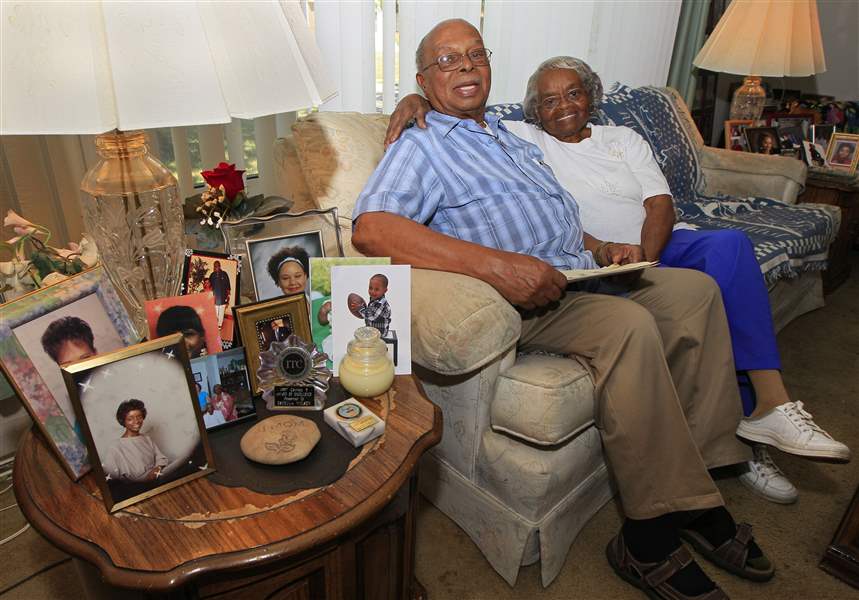
Jewell Wilson, the great-grandson of Jordan Anderson, resides with his wife, Estella, in Dayton, where Mr. Anderson and his family settled after gaining their freedom.
Associated Press
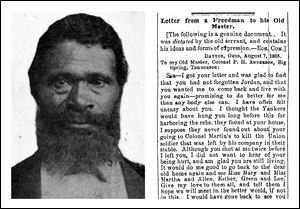
Jordan Anderson, freed from a Tennessee plantation in 1864, spent his remaining 40 years in Dayton. His remarkable letter to his ex-master was published shortly after the Civil War.
DAYTON -- The photograph, scratched and undated, is captioned "Brother Jordan Anderson." He is a middle-aged black man with a long beard and a righteous stare.
Mr. Anderson was a former slave who was freed from a Tennessee plantation by Union troops in 1864 and spent his remaining 40 years in Ohio. He lived quietly and likely would have been forgotten, if not for a remarkable letter to his former master published in a Cincinnati newspaper shortly after the Civil War. Treasured as a social document, praised as a masterpiece of satire, Mr. Anderson's letter has been anthologized and published all over the world. Historians teach it, and the letter turns up occasionally on a blog or on Facebook. Humorist Andy Borowitz read the letter recently and called it "something Twain would have been proud to have written."
A freed slave's words: Click to read Jordan Anderson's letter
Addressed to Col. Patrick Henry Anderson, who apparently wanted Jordan Anderson to come back to the plantation near Nashville, the letter begins cheerfully, with the former slave expressing relief that "you had not forgotten Jordon" (there are various spellings of the name) and were "promising to do better for me than anybody else can." But, he adds, "I have often felt uneasy about you."
He informs the colonel that he's now making a respectable wage in Dayton and that his children are going to school. He tallies the monetary value of his services while on Colonel Anderson's plantation -- $11,608 -- then adds, "we have concluded to test your sincerity by asking you to send us our wages for the time we served you."
Turning serious, he alludes to violence committed against women back in Tennessee and wonders what would happen to his own family members. "I would rather stay here and starve -- and die, if it come to that -- than have my girls brought to shame by the violence and wickedness of their young masters."
He asks if there are schools now for blacks. "The great desire of my life now is to give my children an education, and have them form virtuous habits," he writes.
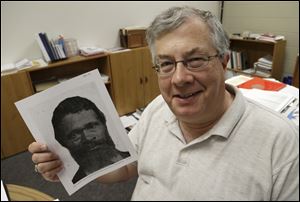
Roy Finkenbine, a professor at the University of Detroit-Mercy, is planning a biography of the ex-slave.
Then he signs off with a swift, unforgettable kick.
"Say howdy to George Carter," he says, "and thank him for taking the pistol from you when you were shooting at me."
Mr. Anderson's words, a timeless kiss-off to a hated boss, are also a puzzle: How could an illiterate man, newly released from bondage, produce such a work of satire?
After the letter resurfaced online earlier this year, along with questions about its authenticity, the Associated Press sought answers.
From documents compiled and in interviews with scholars, Mr. Anderson emerges as a very real person and the very real author of his story -- though, from the beginning, it was reported to have been "dictated." His letter is a testament to the ability of slaves to turn horror into humor.
"The sly irony is very much in the Mark Twain style," Twain biographer Ron Powers says of the letter, especially the request for unpaid wages. "Whammo."
"It is that wonderful combination of serious thought and satirical chastisement," says Yale University history professor David Blight, who loves to read the letter during a class on Reconstruction. "It represents so many definitions of freedom -- dignity, access to education, family. And in the end, it also meant wages."
According to available records, Jordan Anderson was born somewhere in Tennessee about 1825 and by 7 or 8 had been sold to a plantation owned by Gen. Paulding Anderson in Big Spring, Tenn. Patrick Henry Anderson was one of the general's sons and by the mid-1840s owned Jordan and other slaves. Jordan Anderson married Amanda McGregor in 1848 and they apparently had 11 children.
Union troops camped on the plantation, and Jordan was freed in 1864.
Roy Finkenbine, a professor at the University of Detroit-Mercy who is planning a biography of Mr. Anderson, thinks it's likely Mr. Jordan was given to Patrick as a playmate and personal servant when they were young. According to the 1860 slave schedules in the U.S. Census, Patrick Anderson had five "slave houses" totaling 32 people -- 19 males and 13 females.

Jewell Wilson, the great-grandson of Jordan Anderson, resides with his wife, Estella, in Dayton, where Mr. Anderson and his family settled after gaining their freedom.
While the schedules don't list the slaves by name, there were two men, 34 and 35, who would have been about the age Jordan was in 1860. Mr. Finkenbine says Jordan appears to have been the oldest male slave of working age, and that might be why the plantation owner was so eager to entice him back. Many of the slaves had fled, and Colonel Anderson was mortgaged to the hilt.
"Harvest is coming on. Jordan's a guy who's played … sort of a quasi-managerial role in the past," he says. "And if he can convince this guy to come back, here's a guy who cannot only maybe get the harvest in but convince some of these other slaves that have gone ..., get them to come back and be workers on the plantation. It's kind of his last-ditch effort to save it."
But he doesn't save it. In September, 1865, Mr. Finkenbine says, Colonel Anderson sold the nearly 1,000-acre estate to his attorney for a pittance, in an apparent attempt to get out from under crushing debt. Just two years later, Patrick Henry Anderson died at the age of 44.
That's what's known of the famous letter's recipient. What of its writer?
Jordan Anderson's collaborator -- to whom he reportedly dictated the letter -- was a Dayton banker named Valentine Winters. An abolitionist who once hosted Abraham Lincoln at his mansion, Mr. Winters regarded the letter as excellent propaganda, according to Mr. Finkenbine. It was originally published in August, 1865, by the Cincinnati Commercial, a paper with Republican leanings.
Jordan likely made his way to Dayton with the help of Mr. Winters' son-in-law, Dr. Clarke McDermont, the surgeon in charge of the Cumberland Military Hospital in Nashville, where both Jordan and Mandy worked for a time, says Mr. Finkenbine, who places Jordan and his family in Dayton by August, 1864. Mr. Anderson became an employee and tenant of Mr. Winters.
Dr. McDermont expressed concern for the former slaves working as nurses and orderlies and laundresses at the hospital. "And he actually writes back and forth to both his father-in-law and some of the other abolitionists in Dayton, saying, 'Can you raise money for these people? Can you send clothing for these people?'" Mr. Finkenbine says.
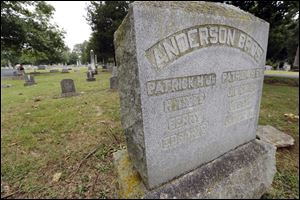
A family gravestone marks the resting place of Col. Patrick Henry Anderson in Cedar Grove Cemetery in Lebanon, Tenn. A letter sent to Mr. Anderson by former slave Jordan Anderson has been praised as a masterpiece of satire.
Mr. Anderson's letter comes right out of the life he had survived. From the insanity of slavery, he and others developed a deadpan, absurdist take that revealed their feelings to each other and hid them from their masters.
"Slaves had to be guarded as to what they said because they would be punished if caught critiquing or offending the master class -- thus they developed sophisticated forms of indirection and other forms of masking," says Glenda Carpio, a professor of African and African-American studies at Harvard University and author of Laughing Fit to Kill: Black Humor in the Fictions of Slavery.
Mr. Anderson's letter is special in part, Ms. Carpio says, because it was written down. Until late in the 19th century, when Joel Chandler Harris' Br'er Rabbit tales were first published, slave humor was essentially an oral tradition. And while newspapers sometimes printed letters to former masters, Mr. Finkenbine notes, few were "so challenging" as Mr. Anderson's.
Mr. Powers finds the letter's tone curious because Mr. Anderson "seems to veer back and forth between irony and aching earnestness.
The former slave's diction, meanwhile, "is pretty much standard English."
The letter was soon reprinted by Lydia Maria Child in her Freedmen's Book used by schools in the South for former slaves. Other U.S. anti-slavery newspapers published it, and Mr. Finkenbine says he has found instances of Mr. Anderson's letter appearing as far away as Switzerland.
Notes on some of these publications state that Jordan dictated the letter verbatim to Valentine Winters, and that Mr. Winters is the one submitting it for publication.
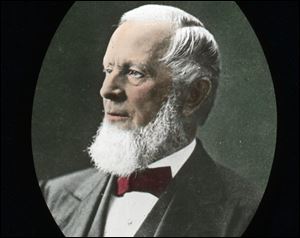
This circa 1890 image provided by Dayton History shows Valentine Winters. The Dayton banker was an abolitionist who once hosted Abraham Lincoln at his mansion.
Regarding questions about whether the letter was really Mr. Anderson's, Mr. Finkenbine says: "It's kind of a racist assumption … that when someone is illiterate, we make the assumption they're stupid." Enslaved people had deep folk wisdom and a rich oral culture, he adds. "Why would we think that he hadn't been thinking about these things and couldn't dictate them to willing abolitionists?
"I think the letter is clearly his ideas and, for the most part, his own words" -- though Mr. Winters probably had "some minor role in shaping the language."
In a 2006 speech at a conference on slavery reparations, historian Raymond Winbush retold the story of Mr. Anderson's letter. He also revealed that he had tracked down some of Patrick Henry Anderson's descendants, still living in Big Spring.
"What's amazing is that the current living relatives of Colonel Anderson are still angry at Jordan for not coming back," knowing that the plantation was in serious disrepair after the war, said Mr. Winbush, director of the Institute for Urban Research at Maryland's Morgan State University.
As a boy, Jewell Wilson, Jordan Anderson's great-grandson, lived with Jordan's daughter Jane and remembers some of her stories from the plantation.
"She said that there was a [white] girl there who was about her age," says the 87-year-old Mr. Wilson, who still lives in Dayton. "And they would whup her for trying to teach my grandma to read and write."
Jane could have been talking about Colonel Anderson's daughter, Martha. Likely the "Miss Martha" to whom Jordan refers in his letter, she would have been about 14 when the black Anderson family left Big Spring.
"She said they came here one time looking for Anderson to take him back," he says. "They wanted him because he was such a good worker and everything. But he said, 'I'm free now. I don't have to go back there.'"
According to probate records, Jordan Anderson died on April 15, 1905. While Mr. Wilson has no oral history about the letter's authorship, he has no problem believing that it reflects his great-grandfather's thoughts.
"They said he was smart." And he succeeded in educating his children.